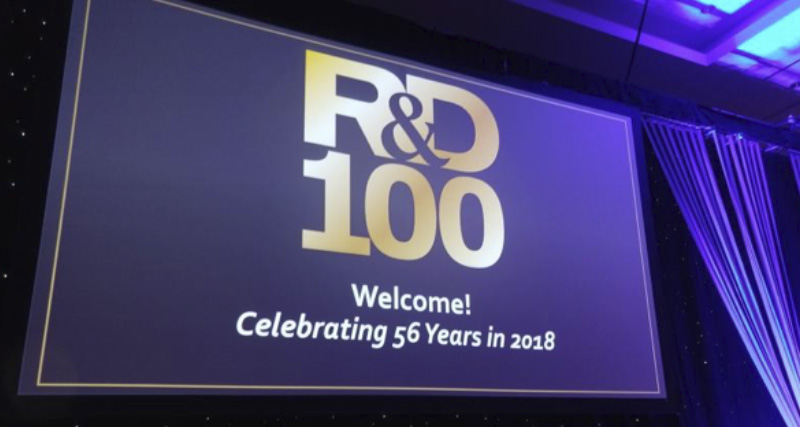MRIGlobal is pleased to announce that two innovations developed at the National Renewable Energy Laboratory (NREL) earned Research & Development (R&D) Magazine’s R&D 100 Awards. R&D 100 Awards are given to the year’s most significant innovations.
MRIGlobal is one of two partners in the Alliance for Sustainable Energy, LLC, which manages and operates the National Renewable Energy Laboratory (NREL) in Golden, Colo., for the U.S. Department of Energy. NREL was designated as a national laboratory in 1991 and today is the nation’s only laboratory dedicated to renewable energy and energy efficiency research and development.
NREL’s two R&D 100 Awards are for foreseeTM Energy Management System and Nitrilation to Acrylonitrile Process.
foreseeTM Energy Management System
NREL-developed software—called “foresee”—is an energy management system that relies on user preferences to control a home’s connected appliances and electronics.
“Right now, if you had a smart dishwasher, a smart washer/dryer, and a smart water heater, you’d have to set up the schedule for everything yourself,” said Bethany Sparn, a mechanical engineer and researcher at the U.S. Department of Energy’s (DOE’s) National Renewable Energy Laboratory (NREL). “You’d have to think about how the appliances interact with each other, the occupants, the building, and the power grid. Deciding when you should turn on your lights seems reasonably intuitive, but how should you control your water heater to reduce your utility bill and use solar energy from your solar panels, without risking your hot shower?”
The solution could rest with NREL-developed software called “foresee,” an energy management system that relies on user preferences to control and coordinate a home’s connected appliances and electronics. The software first asks users to rank what’s most important to them about living in their home. Then it takes those preferences into account and automatically adjusts the devices accordingly.
“Having automation that’s built in, that has an understanding of what’s required to keep people happy, is definitely not something that’s on the market now,” Sparn said. (For more details, visit: https://www.nrel.gov/news/features/2018/software-saves-energy-costs-and-more.html)
Nitrilation to Acrylonitrile Process
In plotting a course for the future, NREL researchers followed a road map from 1916. Their guide—a journal article penned by two chemistry professors from Johns Hopkins University—illuminated a path toward a groundbreaking new method to make the compound acrylonitrile from renewable sources.
Ongoing research by chemical engineer Eric Karp and others at the U.S. Department of Energy’s (DOE) National Renewable Energy Laboratory (NREL) could lead to a cleaner method of transforming acrylonitrile (ACN) into carbon fiber, replacing petrochemicals with biomass as the starting point.
“In the early 1900s, researchers—and people in general—didn’t have access yet to the vast petrochemicals that are available today,” Karp said. “That’s because the petrochemical industry really wasn’t developed yet. Researchers were forced to use what was easily available to them, and that mostly included natural products.”
So, scientists in the early 20th century developed techniques to make chemicals from natural products, but according to Karp, these processes were “mostly forgotten as the petrochemical industry really came online in the ’40s and ’50s.” Now, renewable feedstocks are back in focus and the methods developed nearly a century ago are helping guide modern research.
Taking a page from history, Karp, Chemical Engineer Violeta Sànchez i Nogué, Todd Eaton (a postdoctoral researcher with NREL at the time), and their colleagues successfully produced 50 grams of bio-derived ACN. That capped the first phase of a DOE-funded program. The second phase, now underway, calls for the production of 50 kilograms of ACN that will be converted into carbon fiber and tested.
“Carbon fiber is this amazing lightweight material,” Karp said. “Imagine replacing all of the steel and aluminum in a car with carbon fiber. Think of how far a car would go with the gas mileage you could get. You’re looking at 60 miles per gallon for the average car on the road with existing engine technology.” For more details, visit: https://www.nrel.gov/news/features/2018/nrel-shifts-carbon-fiber-research-into-second-gear.html)
About R&D 100 Awards:
The 56th annual R&D 100 Awards is an international competition that recognizes the 100 most exceptional innovations in science and technology from the past year. The R&D 100 Awards have long been considered the most globally prestigious recognition of invention and innovation.
R&D 100 Awards recipients include established Fortune 500 companies and federally funded research institutions, as well as academic and government labs. Their leading products, technologies and services will make a difference in a wide range of industries and together represent a bright future for science and innovation in the years to come. Current and past winners share in the pride of achievement and global recognition an R&D 100 Award offers.
The R&D 100 Award Winners were selected by an independent panel of more than 50 judges representing R&D leaders in a variety of fields. Winners were recognized across five major categories—Analytical/Test, IT/Electrical, Mechanical/Materials, Process/Prototyping, and Software/Services and Other. The full list of winners can be found here
Winners of the R&D 100 Awards are selected by an independent judging panel and the editors of R&D Magazine. The publication and its online portal serve research scientists, engineers, and other technical staff members at high-tech industrial companies and public and private laboratories around the world. A full list of this year’s winners is available at www.rdmag.com
Learn more here about MRIGlobal’s management and operation capabilities.

